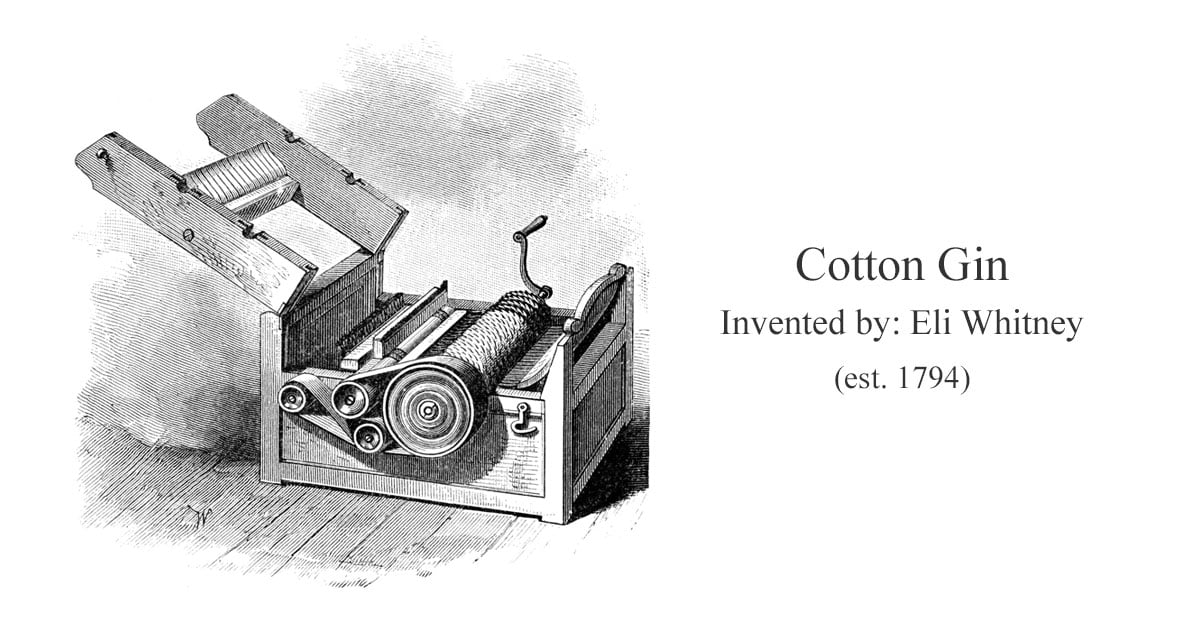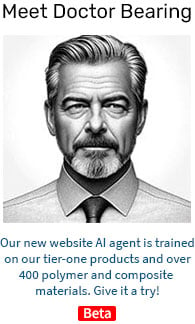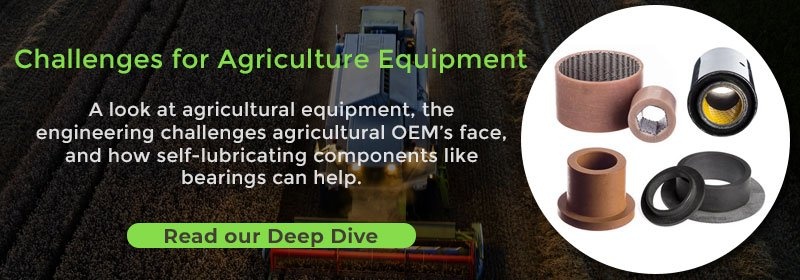5 min read
History of Agriculture Equipment: Important Developments and Examples
![]() Dave Biering
December 21, 2020
Dave Biering
December 21, 2020

The agriculture industry has a mission to keep the world fed. From hybridizing plants and animals to engineering new arable lands using irrigation (and even land reclaiming land from the sea), farmers have never stopped looking for new methods for increasing food production. More production means more nutrition and more food variety, all while keeping food prices as low as possible. For a concise overview of the agriculture industry, please see our blog here.
In this blog post, we focus on outlining the history of one of the most important ingredients to the agriculture industry’s millennia-long effort to increase food production: agriculture equipment. Equipment has always been vital to increasing yields while reducing agriculture’s dependence on manual labor.
While this post focuses on history, agriculture equipment exhibits continued innovation to this day. Click here for our article on key engineering challenges for agriculture equipment (and how advanced self-lubricating components can help tackle them).
Early History: Agricultural Equipment Pre-Mechanization
Today, advancements in agriculture equipment tend to center on better, more efficient mechanized equipment. Even before powered machines, however, equipment innovations played an important role in agriculture’s historical development.
The earliest innovations involve the invention of the first implements to advance farming beyond working directly with hands, sticks, and simple stone hoes. A few examples include:
- The earliest plows, in the form of forked sticks used to scratch trenches in the dirt for planting seeds, emerged over 5000 years BC. While hand-drawn plows were only a suitable replacement for hoes in certain climates, they allowed for rapid preparation of far more ground. Beginning with the domestication of oxen (first in the Indus Valley around 4000 BC) draft animals would soon allow for much more efficient use of emerging plow technologies. Wooden, animal-drawn plows would become the preferred method of tilling by 1500 BC. Some of the earliest wooden plow examples are found in Ancient Sumeria (modern-day Iraq).
- Around the same time, we have found examples of some of the earliest stone sickles, an implement which dramatically increased humans’ ability to harvest large quantities of grain. The invention of the sickle helped make the earliest grain agriculture possible. The earliest examples were simple flint or stone blades attached to a wood or bone shaft. Sickles became one of the first applications of early metalworking, with copper and bronze sickle blades emerging as knowledge of metal-working matured and proliferated.
Even modest improvements to this design made a real difference for agricultural productivity: the invention and proliferation of the long-bladed, long-handled scythe are credited with substantially increasing production compared to sickles. - The first known iron plow was developed in China around 475 BC. Limited metal-working capabilities meant early plows included only a small metal blade attached to a wooden implement. As metal-working improved, plows could be made with more metal and at much higher weights. By the Han Dynasty period (200 BC - 200 AD) all-metal, cast-iron plows were being employed, leading China into a revolution of agricultural productivity.
Metal plows would not expand to Europe until much later, during the early Middle Ages, where they drove greater productivity due to their ability to work in colder, clay-based soil. The first steel plow would not be introduced until John Deere in 1837.
The Rise of Mechanized Agriculture Equipment
Jethro Tull’s invention of an improved mechanical seed drill in 1701 marked the beginning of a new age for agriculture equipment. Tull’s machine combined a small plow for creating a planting row, integrated with a hopper for storing seed, a funnel for distributing it, and a harrow for re-covering the newly planted seed. Prior to this invention, seeds were either scattered (or in some cases, like bean pods, individually hand-planted). Tull’s seed drill could be pulled by hand or animal.
Tull’s invention foreshadowed a common trend for the coming mechanical revolution: integrating more tasks into a single, integrated piece of equipment to accomplish them more quickly and more precisely than was possible through manual labor alone. Innovations would begin emerging more quickly than ever.
Important Examples of Agricultural Equipment Innovation
- In 1794, Eli Whitney developed the first hand-powered cotton gin suitable for the short-staple cotton grown in North America (gins used for long-staple cotton in India have a much longer history). This device separates seeds/hulls and other detritus from cotton fibers, a process that had earlier been extremely labor-intensive.
- By 1834, rival reaper designs from Hussey and McCormick marked the first move away from sickle/scythe reaping of grains. These devices could be drawn by horse, while a hand-crank powered a reciprocating cutting bar. While a skilled farmer could harvest at most 1-2 acres per day with a scythe, the mechanical reaper allowed one man (with a horse) to harvest large fields in a day. With this increase in efficiency, farm sizes could expand to hundreds or even thousands of acres.
- The proliferation of the steam engine created the first technological options for replacing human and animal power in agriculture. The earliest agricultural steam engines were used in the early 19th century. These examples were portable machines that could be placed in a field or a barn to power farm machinery like threshing machines. Power was transmitted using a belt or drive chain (a mechanism used to transmit power to machinery towed by tractors to this day). Soon, steam traction engines would even be placed on both ends of a field to actually pull a wire-drawn plow back and forth.
- While experimental steam-tractors found some applications, they were cumbersome, heavy, and dangerous pieces of machinery. The invention of the internal combustion engine would lead to the first gasoline-powered tractor by John Froelich in 1892. While tractor designs would take time to perfect, Henry Ford would introduce a popular mass-produced tractor, the Fordson, by 1917. Ever since, the tractor has been at the center of agriculture: it can both tow and power a variety of implements, from simple plows to combine harvesters, operating as a flexible investment for farm mechanization across the entire cultivation cycle.
“Low prices made it possible for thousands of small-scale farmers to afford a tractor, and ownership jumped. In 1916, about 20,000 tractors were sold in the U. S.; by 1935 that number had jumped to more than 1 million.” - Smithsonian Insider
- Equipment OEM’s continue to look for opportunities for more integration and efficiency. An iconic example is the combine harvester, which combines reaping, threshing, and winnowing into a single piece of equipment. First invented in 1935 and pulled by horse or tractor, today combines are often self-propelled.
Combines are incredibly complex pieces of machinery that can be further customized with specialized platforms for harvesting particular types of grain. The Illinois Farm Bureau provides a great explanation here.
Innovation in agriculture equipment continues to this day. GPS, for instance, is helping farms to work more precisely than ever. Aerial drones are being used for more and more applications, from scanning/monitoring to pesticide dispersal. And the “internet of things” (IoT) is finding promising agricultural use cases.
Learning More: Engineering Challenges for Agricultural Equipment
At TriStar, we work hand-in-hand with the engineers who work to design and produce better agricultural equipment to this day. We work with a diverse variety of agricultural equipment OEM’s to help solve key engineering challenges for everything from tractor under-carriages to liquid sprayers (for fertilizer, pesticide, etc.)
Our bearings and other components fabricated from advanced self-lubricating materials can offer greaseless operation for lower maintenance costs, less equipment downtime, and the functional characteristics needed to replace traditional metal bearings in a wide variety of applications.
We employ a true consultative engineering approach to help our customers select components that can generate real ROI for agriculture equipment. Critical components work best when they are engineered to reflect relevant operational challenges (not treated as commodities to be sourced from the cheapest bidder).
For a more specific look at how TriStar materials can help solve key engineering pain points for agriculture OEM’s, please click below to see our guide.
If you prefer to reach out directly to the TriStar team to discuss your agriculture product and its component needs, you can contact our bearing experts using the button below.










